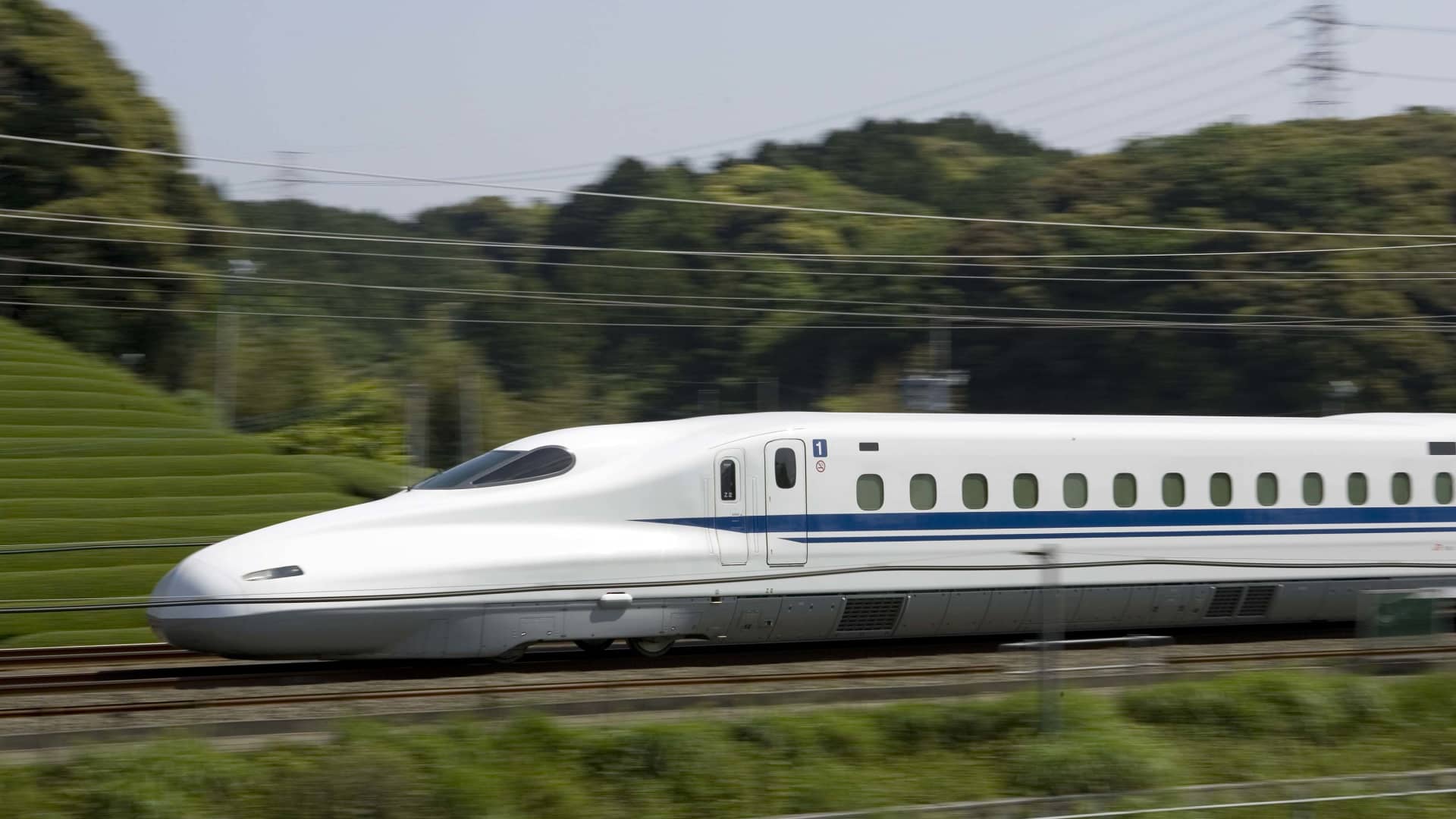The U.S., despite decades of research and studies, remains without authentic high-speed rail options.
Since 1987, investors have attempted to introduce bullet train service to Texas. In 2014, a group organized under the name Texas Central launched the most recent attempt to connect Dallas to Houston with a bullet train that travels more than 200 miles per hour, shortening a three and a half hour drive to a 90-minute train ride.
“You cannot do that in a car,” said Andy Byford, senior vice president of high-speed rail programs at Amtrak. “You cannot do that if you fly, if you factor in going to the airport, going through security, getting back in from the airport at the other end.”
Byford is the latest in a long line of U.S. policy experts to call for more high-speed rail connections in the U.S. In 2023, Amtrak revived hopes for the bullet train in the Texas Triangle, when it announced its intention to broaden its partnership with Texas Central.
The fast-growing region contains both the Dallas-Fort Worth metroplex and Houston, two of the largest population centers in the country.
“If you don’t build high-speed rail between Dallas and Houston, then you only have two options,” said Congressman Seth Moulton, D-Mass., a former managing director at Texas Central. “You can either expand the airport or expand the highway. It’s not going to decrease the travel time between those cities. It’s still going to take at least three hours to get between Dallas and Houston”
Local experts told CNBC that the swelling population of Texas drivers has taken a toll on roads in the area, leading to traffic congestion and safety issues.
“Our transportation system is just really trying to keep up with our population growth” said Brianne Glover, senior research scientist at Texas A&M University’s Transportation Institute. “Commuters experience somewhere around 40 hours of delay each year.”
The Texas Central project has been repeatedly delayed as its backers navigate various regulatory hurdles, including environmental reviews and disputes over property rights. In 2022, the Texas Supreme Court declared that Texas Central, a private entity, met the legal definition of a public interurban electric railway company, giving it the power of eminent domain.
“When I was notified by my nephew through an article about eminent domain, I was absolutely shocked,” said Jody Berry, a Dallas-based farmer who has opposed the Texas Central initiative. The proposed alignment for the Texas high-speed rail project crosses Morney-Berry Farm, which Berry’s family has cultivated for generations.
“Finding out that the high-speed rail could potentially go through our property has made it very difficult for me to sleep,” Berry said.
The project is expected to cost at least $33.6 billion dollars, according to a March 2023 estimate from the Reason Foundation. Similar high-speed rail projects around the world have faced substantial cost overruns in development, including Japan’s Tokaido Shinkansen system. The route in Texas is designed to leverage N700 cars found on the Shinkansen system.
The Texas effort has received substantial support from firms in Japan and the U.S. government. In 2018, the Japan Bank for International Cooperation issued a $300 million loan to support the project. And in late 2023, Texas Central received a Corridor ID program grant to study the route’s potential for partnership with Amtrak.
With a historic $66 billion commitment to passenger rail, the U.S. government under Biden appears to have its best bet in generations to build high-speed rail systems. But the project and other publicly subsidized ones, such as the California project connecting Los Angeles to San Francisco, remain uncertain. The California project’s estimated cost skyrocketed from $33 billion to over $100 billion amid delays and pushback from rural landowners, according to the California High-Speed Rail Authority.
“The Biden Administration’s aspirations for high-speed rail fail to account for several realities, including lack of customer demand, economic viability, and impact on existing rail infrastructure,” said Rep. Troy Nehls, R-Texas, in a November 2023 congressional hearing on intercity passenger rail systems.
The backers of Texas Central declined repeated requests from CNBC for a comment on the project’s progress and expected completion date.
Watch the video above to learn about the long effort to bring high-speed rail system to the Texas Triangle.
